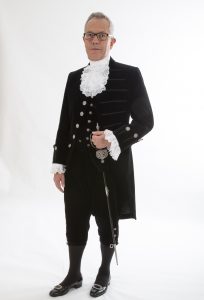On Tuesday 30th June, we were privileged to (virtually) host Dr John Manley, High Sheriff of The County of City of Bristol as part of our digital programme, exclusively for Clifton Club Members. Club Chairman, Mike Beesley, hosted our virtual interview with Dr Manley, who provided an incredibly interesting insight into his professional and personal experiences.
Dr Manley explained how Bristol become a global centre in computing through, initially, Inmos and the Transputer – a revolutionary idea that attracted leading Computer Scientists to the City in the 1970s. When Inmos was taken over in 1989 most of the scientists and engineers continued to live in Bristol and founded their own computer companies. The family tree of Inmos (Meiko, Quadrics, Division (VR), PixelFusion, Motion Media, XMOS, Icera, Gnodal, Graphcore, …) led to Bristol being cited as the second largest concentration of silicon design companies in the world after Silicon Valley. The next important development was Hewlett-Packard choosing Bristol for the first site of its long-range research labs outside California. Hewlett-Packard is credited with starting Silicon Valley in 1939. The 180 acre Wallscourt Farm site next to UWE became the European base for many parts of HP, including the huge mass-storage Division. Upwards of 1500 people were employed, and HPLabs itself attracted over 800 scientists and engineers during its time there – many of these in exactly the same fashion as Inmos have stayed in the Bristol area and founded their own companies. The most famous of these is probably IMDb (the Internet Movie Database) – the Founder and CEO, Col Needham, still lives in Hambrook and the software development is based in Castlemead.
John joined HPLabs shortly after it opened and stayed for 28 years, retiring as the Laboratory Director for Cloud Computing. The research in Cloud Computing, started in 1997, required a massive-scale computing problem to test it. Because of Bristol’s great strength in the creative industries CGI-Rendering was chosen. This is a very compute-intensive task that takes the wireframe models, textures, backgrounds, lighting models created by the artist and converts them into frames of an animated film. Each frame, (each second of film has 24 frames), requires hours of compute time on a high-performance server – it can be as long as 40 hours. John’s research group built an on-demand CGI-rendering Cloud service and worked with Bristol animation company 422 South to produce the very first animated film that used only Cloud rendering: The Painter (copies are available). This film was shown to Dreamworks in LA. And as a result they started a collaboration with HPLabs to radically increase the rendering on Shrek2 through a dedicated 1000-server rendering farm was built in Palo Alto. HPLabs contributed over 100 CPU-years of rendering for Shrek2, allowing much more detailed skin and fur textures and very complex lighting models. This collaboration continued with Madagascar. Alex the Lion has over 50,000 independently moving hairs in his mane. Every time his head moves, the mane has to move correctly – the human eye is brilliant at spotting when things are not right. This requires huge amounts of Computational Fluid Dynamics to be done as part of the rendering – something that HPLabs Cloud rendering service was able to assist with. Following that, the research moved into market-based rendering where an animator had to go to a spot or futures market and bid for rendering time – the price being automatically determined by the degree of contention. 12 animation companies were involved each producing a film (copies are available). Other areas of high-performance computing were turned into Cloud services: Computational Fluid Dynamics to perform whole-car aerodynamics for Williams F1, Monte-Carlo simulations for investment banks and reservoir simulations for an oil and gas company.
Dr Manley also touched on his experience on the Board of the CERN Grid OpenLab and the astonishing data collection and analysis for 40 million particle collisions per second. He talked about being at CERN as the LHC was being built and watching, over a period of two years, the quite extraordinary construction of one of the detectors – a 15,000 tonne machine (about 30 times the weight of a fully-loaded 747-400ER) observing collisions at the scale of a human hair’s width.
Before introducing his new role of High Sheriff of the County of the City of Bristol. Dr Manley noted that the High Sheriff role is the oldest secular office in the UK dating back to Saxon times. John described the role as originally being the appointed representative for tax collection on behalf of the monarch and being responsible for law and order in the County. Over time, the role changed with most powers and responsibilities taken by other bodies. He noted that the position was not always welcomed by potential candidates as it carried risks both financial and physical – hence the ancient ceremony performed by the Monarch of “pricking the names” of the next High Sheriffs with a silver bodkin to avoid any tampering with the choice. Dr Manley was appointed High Sheriff of The County of City of Bristol in March 2020. This was brought forward by 5 days to ensure that the officials required at the ceremony by the Sheriff Act of 1887 were able to attend in person before the lockdown started. The Court Dress has had a limited number of brief public appearances, principally for flag-raising ceremonies on College Green,
We would like to thank Dr Manley for taking part of our Clifton Club digital programme and we wish him the very best throughout his time as the High Sheriff of Bristol.


